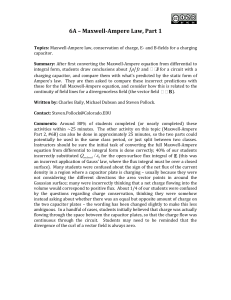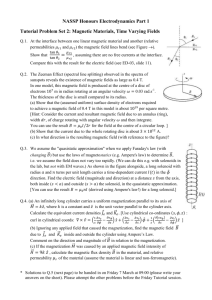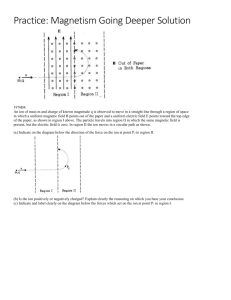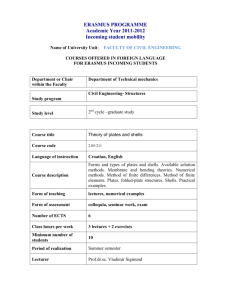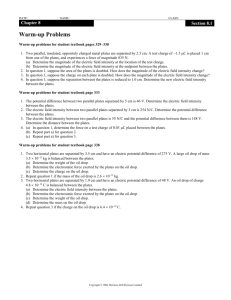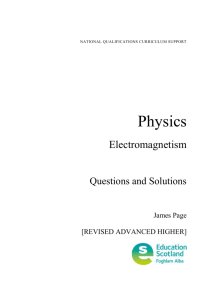Word
advertisement
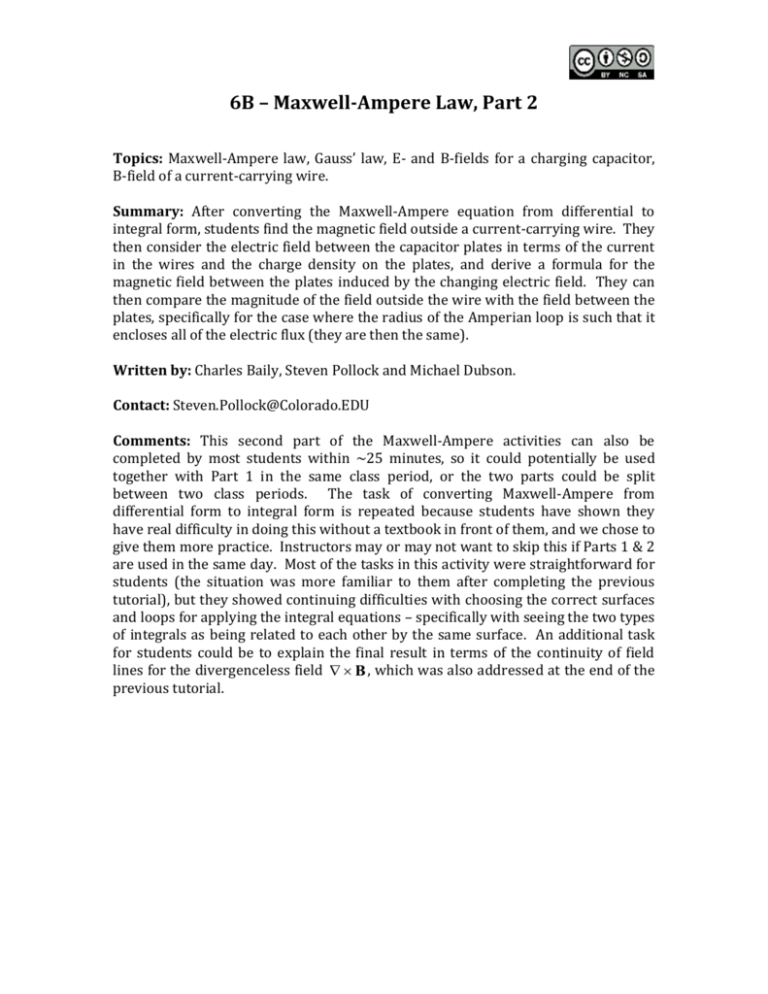
6B – Maxwell-Ampere Law, Part 2 Topics: Maxwell-Ampere law, Gauss’ law, E- and B-fields for a charging capacitor, B-field of a current-carrying wire. Summary: After converting the Maxwell-Ampere equation from differential to integral form, students find the magnetic field outside a current-carrying wire. They then consider the electric field between the capacitor plates in terms of the current in the wires and the charge density on the plates, and derive a formula for the magnetic field between the plates induced by the changing electric field. They can then compare the magnitude of the field outside the wire with the field between the plates, specifically for the case where the radius of the Amperian loop is such that it encloses all of the electric flux (they are then the same). Written by: Charles Baily, Steven Pollock and Michael Dubson. Contact: Steven.Pollock@Colorado.EDU Comments: This second part of the Maxwell-Ampere activities can also be completed by most students within ~25 minutes, so it could potentially be used together with Part 1 in the same class period, or the two parts could be split between two class periods. The task of converting Maxwell-Ampere from differential form to integral form is repeated because students have shown they have real difficulty in doing this without a textbook in front of them, and we chose to give them more practice. Instructors may or may not want to skip this if Parts 1 & 2 are used in the same day. Most of the tasks in this activity were straightforward for students (the situation was more familiar to them after completing the previous tutorial), but they showed continuing difficulties with choosing the correct surfaces and loops for applying the integral equations – specifically with seeing the two types of integrals as being related to each other by the same surface. An additional task for students could be to explain the final result in terms of the continuity of field lines for the divergenceless field B , which was also addressed at the end of the previous tutorial. 6B - Maxwell-Ampere (2) NAME_________________________________________________ A. The full Maxwell-Ampere Law in differential form is: B 0 J 0 0 E t Rewrite this equation in integral form using Stokes’ theorem. B. Consider a capacitor in the process of charging up, shown edge-on in the diagram below. The circular plates have radius R , area A R 2 , and are so close together that fringe effects can be ignored. A current I is flowing in the long, straight wires. Use the Maxwell-Ampere law to derive a formula for the magnetic field at the point “x” indicated in the diagram, a short distance r from the wire. Use Gauss’ law in integral form to derive a formula for the electric field between the capacitor plates. Be specific about the Gaussian surface used, and write the answer in terms of , the charge per unit area on the plates. 1 6B - Maxwell-Ampere (2) NAME_________________________________________________ Write down a relationship between the current I flowing in the wires and the rate of change of the charge per unit area on the plates t . Use this information to find a relationship between the current I flowing in the wires and the rate of change of the electric field between the plates E t . C. Use the diagram at right to indicate the direction of the magnetic field everywhere along the dashed loop, at a distance r from the center of the plates, shown here face-on. Use the Maxwell-Ampere Law to derive a formula for the magnetic field at a distance r R from the center of the plates. Express your final answer in terms of the current I flowing in the wires. 2 6B - Maxwell-Ampere (2) NAME_________________________________________________ Use the Maxwell-Ampere Law to derive a formula for the magnetic field at a distance r R from the center of the plates. Express your final answer in terms of the current I flowing in the wires. Consider the two line integrals of the magnetic field r and B dl — L1 r B dl — L2 shown in the diagram below; both loops have the same radius r . How do the values of these two loop integrals compare? Is one larger than the other, or are they equal in magnitude? Explain your answer using the formulas you derived. 3


